The Way It Is/ Penske's Maestro, Karl Kainhofer & the History of Penske Racingby Gordon Kirby |
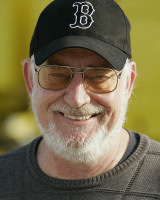 Penske Racing celebrates its 50th anniversary this year and Joe Freeman and I look forward to helping fans of Roger Penske's legendary team enjoy its great history when we launch Karl Kainhofer's biography in May at the 100th running of the Indianapolis 500.
Penske Racing celebrates its 50th anniversary this year and Joe Freeman and I look forward to helping fans of Roger Penske's legendary team enjoy its great history when we launch Karl Kainhofer's biography in May at the 100th running of the Indianapolis 500.
Karl was the first man Penske hired when Roger started his race team in 1966. He worked as Mark Donohue's chief mechanic for ten years through Donohue's death in Austria in 1975. Thereafter, Karl ran Penske's engine shop for 22 years through his retirement in 1997 and over a stretch of 32 years Kainhofer without doubt was the heart and soul of the team. In the Foreword to 'Penske's Maestro', Roger pays tribute to Karl's wide array of skills and inexorable work ethic. "Right from the beginning," Penske writes, "the thing that stood out about Karl was his attention to detail. The cars were always immaculately prepared and the way he set up all the details of the valve train and the carburetors and every part of the car was always so much better than anybody else. With Karl, we always seemed to have an edge. 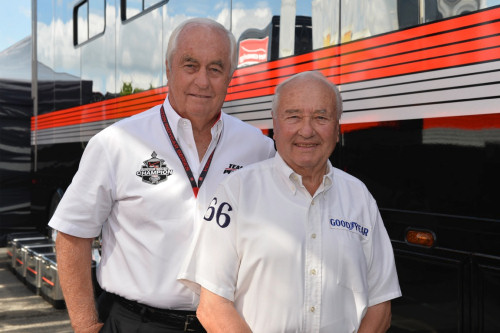 © Steve Swope "Later when we started our engine shop Karl did such a fantastic job, first with the Cosworths, then the Ilmor/Chevrolets, and then the Mercedes-Benz engines. It was amazing how reliable Karl's engines were. His record of reliability has got to be one of the best in the history of motor racing. We won many races and championships thanks to Karl's engines. "And that comes back to his relentless way of working. He would never stop. He was always refining this or that detail from the valve lash to the tension in the drive gears or belts. Karl is a special guy." Karl Kainhofer came to America in 1958. An all-purpose motorcycle and car mechanic Kainhofer had moved to Germany from his native Austria in 1956 to work at Porsche in Stuttgart where he entered into a training program to become a specialist in building every element of any Porsche road or race car. Graduates of the program were offered jobs in Porsche dealerships around the world and when Kainhofer completed his Porsche education he chose to emigrate to America. Kainhofer quickly established himself in his new country as a racing mechanic, first with talented young racer and Porsche dealer Harry Blanchard who hired the young Austrian to take care of his Porsche Speedster. Blanchard was just beginning his racing career and won a string of SCCA races in 1958 and '59. Blanchard scored a dozen SCCA regional wins in 1958 and really made his mark the following year, winning another dozen SCCA Nationals across the country as well as some races in Canada. 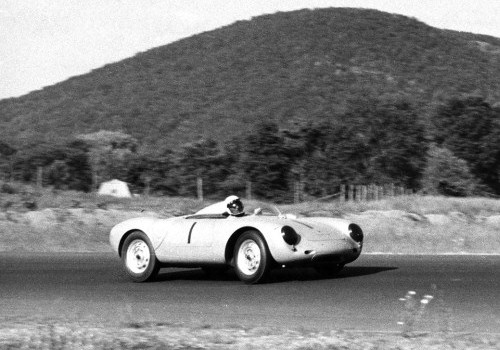 Harry Blanchard in 1958 ~ © Kainhofer collection Penske was impressed with Kainhofer's mechanical skills, unrelenting work ethic and immaculate work and asked Blanchard if Kainhofer could also take care of his car. Blanchard agreed and Penske kept his car at Blanchard's shop through the second half of 1959. Following his fine results in the '59 racing season Blanchard was able to make a deal with factory Porsche driver Wolfgang Seidel to co-drive Seidel's car in the first round of the 1960 World Sports Car championship, a 1,000 kilometer race in Buenos Aires featuring factory teams from Ferrari, Maserati and Porsche. An excited Blanchard flew down to Argentina with his wife and Kainhofer who helped Seidel's mechanic prepare the Porsche for the race. But Blanchard was killed on the opening lap after a collision with another car. It was a tough time for Kainhofer as he had to help Blanchard's grief-stricken wife through the funeral in Argentina before carrying his boss's ashes back to the United States for a sombre memorial service in Connecticut. After Blanchard's death Kainhofer freelanced through 1960 and '61, taking care of Penske's Porsche as well as Bob Holbert's similar car. He also helped Leroy Gane prepare two F1 cars--a Cooper and a Lotus--that Penske raced in the 1961 and '62 United States GPs at Watkins Glen. Kainhofer also worked occasionally on a Cooper Monaco sports/racer and Lotus Formula Junior car that Penske raced in 1961. 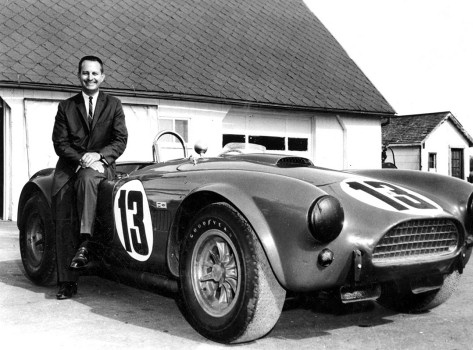 Tom Payne & his Cobra ~ © Payne Family collection In the winter of 1965-'66 Kainhofer worked at KarKraft in Detroit helping build Ford's mk IV Le Mans cars that would sweep the famed 24 Hour race in 1966 and '67. After finishing the job, Karl took a vacation trip to the Sebring 12 Hours in March of '66 where he again bumped into his friend Roger Penske who told him he was starting a race team with sponsorship from Sunoco. Kainhofer agreed to join Penske and thus was born one of the sport's most successful teams. With Kainhofer on board as his first employee Penske chose Mark Donohue to be his lead driver and engineer. In 1966 Donohue drove a Lola T70-Chevrolet Group 7 car in the United States Road Racing Championship and the first season of the new Can-Am series. Donohue and Kainhofer soon become close friends as well as working partners while Kainhofer worked as Donohue's chief mechanic for ten years through 1975 preparing Can-Am, Indy, Formula 5000 and F1 cars. Donohue scored Penske Racing's first win in a USRRC race at Seattle at the end of July, 1966. He also won the third Can-Am race run at Mosport in the fall of '66 and finished second overall in the inaugural Can-Am championship behind John Surtees and ahead of Bruce McLaren. With Kainhofer preparing his cars Donohue went on to win the USRRC title in 1967, winning six of seven races. 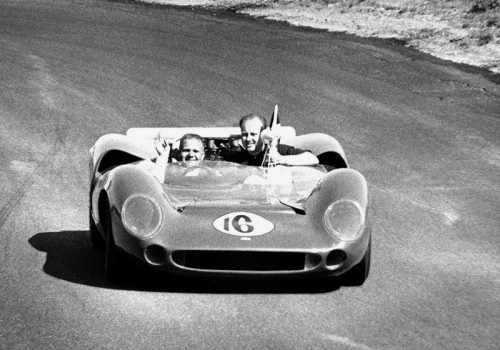 Donohue & Karl celebrate Penske's 1st win in July 1966 ~ © Kainhofer collection Near the end of 1974 Donohue started racing Penske's new Formula One car, the PC1. Kainhofer spent a few months building the first PC1 at Penske Cars in the UK and Donohue debuted the car at the Canadian and United States GPs at Mosport and Watkins Glen at the end of the '74 season. In 1975 Donohue and Kainhofer set out to campaign the entire Formula One circuit, working out of Penske Cars on the UK's south coast. Donohue finished seventh in the season-opening Argentine GP and was able to take eighth place in South Africa before earning some points with a fifth place finish in Sweden. But Donohue struggled with the PC1 and in mid-summer Penske decided to buy and race a March. Kainhofer got the car ready and Donohue finished an encouraging fifth at the British GP in his first start with the March. He didn't finish the next race in Germany but disaster struck at the following round in Austria. In the race day morning warm-up session Donohue crashed heavily following a suspected tire failure. Initially he seemed to be okay, other than suffering a concussion, and was taken to the track's field hospital complaining of a severe headache. Later that evening he lost consciousness and an operation was performed in an attempt to relieve the pressure of internal brain hemorrhaging. But on Tuesday evening, Donohue died. It was a terrible time for Donohue's family and for Penske and Kainhofer who had worked and lived with him for so many years. 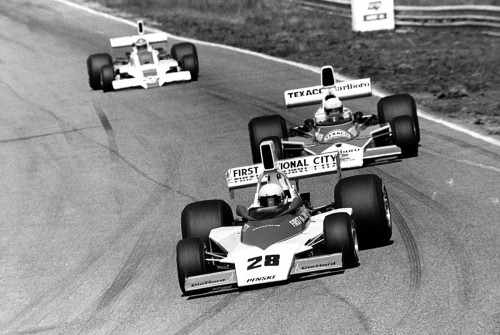 Donohue in action in Formula 1 ~ © David Phipps/Kainhofer collection For the next 22 years Kainhofer was Penske's chief engine man, building Cosworth, Chevrolet and then Mercedes-Benz engines for Penske's Indy car team. Kainhofer built the engines for all of Rick Mears' 29 Indy car wins, including his four Indy 500 victories. He also built Indy 500 winning engines for Bobby and Al Unser, Danny Sullivan, Emerson Fittipaldi and Al Unser Jr. Al Jr. scored Kainhofer's ninth and last Indy 500 win in 1994 with the famous Mercedes-Benz engine, known as 'The Beast'. Kainhofer's final Indy car victory came with Paul Tracy in a CART race at the Gateway oval outside St. Louis in May, 1997. After 32 years with Penske Kainhofer retired at the end of 1997. Over a racing career that spanned 40 years and 535 races, Kainhofer scored a truly remarkable 170 wins; 32 with Harry Blanchard, 18 with Tom Payne, four with Penske as a driver, plus 22 with Donohue at Penske Racing in USRRC, Can-Am and Indy cars, and 94 as the chief engine builder for Penske's Indy cars from 1977-'97. In writing Karl's biography I had the pleasure of talking with 60 people who worked with him over the years. These include drivers, crewmen, engineers, engine builders and many others who help bring Karl's story to life with numerous anecdotes and memories of working with Karl. Somewhat to my surprise the book turned into a warm human story of Karl's quiet influence on so many lives. He had a rare ability to lead people and push them forward, inspiring many of them to develop and expand their skills. Nick Goozee was managing director of Penske Cars in the UK for twenty-five years from 1983 through its close in 2009. Goozee comments in the book on Karl's role in Team Penske's expansion and development through the nineteen eighties and nineties. 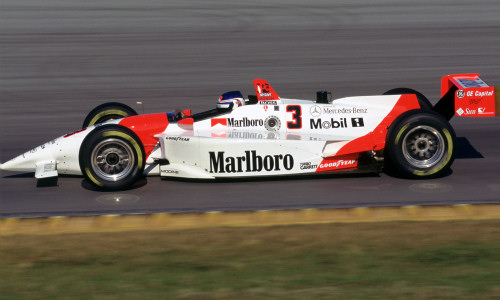 Paul Tracy scored Kainhofer's last win in 1997 ~ © Racemaker/Steve Swope "Within Team Penske, Karl was the first, and even in spirit he will be the last. All dynasties are built upon the foundations laid down at the very beginning. Karl may not have been the easiest team mate but he had the remarkable ability to constantly raise the bar, and just when you thought you had reached it he would push it a little higher. That is why Team Penske is arguably, to this day, one of the best teams in the history of motor sport." If you want to understand the inside human story of Penske Racing you will enjoy 'Penske's Maestro'. The book includes more than 350 photos and a complete statistical record of Karl's career. It's now being designed and will be off the press in April or early May in time for our Racemaker Press launch at the Indianapolis Motor Speedway's Hall of Fame Museum on Friday evening, May 27th. Karl, Joe Freeman and I look forward to seeing you there. |
|
Auto Racing ~ Gordon Kirby
Copyright ~ All Rights Reserved |
